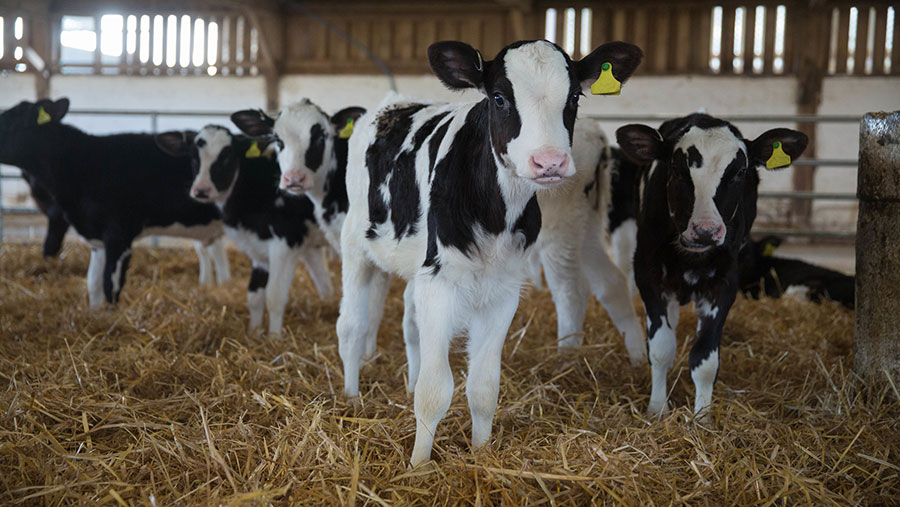Video: Study shows calves have personalities
 © Tim Scrivener
© Tim Scrivener A bespoke era of calf husbandry will be investigated by Canadian researchers after trials suggested dairy calves are naturally optimistic or pessimistic.
Calves can be either persistently optimistic and bold or fearful and pessimistic, concluded a University of British Columbia trial which looked at the behaviour of 22 Holstein calves.
This is the first time the idea calves have a personality and display judgement bias has been supported by scientific research.
Research leader Maria von Keyserlingk said considering each individual animal’s perspective is important for livestock management.
Two personality traits – fearfulness and sociability – emerged over time and were found consistently in the study published in the journal Scientific Reports last month.
See also: How a Cumbria farmer improved calf health and growth rates
Dr von Keyserling said: “Sometimes we are tempted to only see the herd, even though this herd consists of different individuals who cope differently with stressful events. Even if conditions are good, on average, some animals may still suffer.”
These mindsets are known personality traits in humans but little is understood around how they relate to personality differences.
“Calves that were more fearful were also more likely to view the glass as half empty,” said Dr von Keyserlingk.
Experimental model
- Two sessions at 25 and 50 days of age
- 22 Holstein heifer calves studied within six hours of birth
- Calves were penned individually until five days and moved to a 35sq m group pen
- Calves fed 12 litres/day of whole pasteurised milk and ad-lib water, hay and grain
“The next step in our research will be to understand what type of rearing conditions help ensure an individual animal has a good life,” added von Keyserlingk.
“For example, more pessimistic calves may require different types of housing and management than we currently provide.”
How they found calf personality
Calves were faced with a set of five holes in a wall.
On one end of the row a bottle filled with milk was pushed through the hole, on the other a similar bottle delivered a puff of air.
Calves quickly learned which end would reward them with milk, at which point researchers moved the milk to one of the three intermediate holes.
Optimistic calves approached the bottle even if positioned next to the empty bottle, while pessimistic calves avoided the bottle completely.
A four-stage personality test then followed, testing how calves reacted in unfamiliar situations; open field, novel object, human reactivity and social motivation.
Four tests for calf confidence and optimism
Open field
Calves entered an unfamiliar pen alone. Distance covered, time spent exploring and number of vocalisations were recorded.
Novel object
A black, empty 50 litre plastic bucket (novel object) was placed in the experimental pen. Willingness and delays to touch the object were recorded, along with contact duration, time spent in proximity, total distance covered and vocalisations.
Human’s reactivity test
An unfamiliar human stood in middle of the pen. Delays to contact the human, duration of contact, distance covered and vocalisations were recorded.
Social motivation
Carried out in a 2m5x5m alley way with holding area separated by a fence. Each calf was isolated in holding area for five minutes. Vocalisations were recorded and after five minutes the calf was free to return to the group. This was timed.
